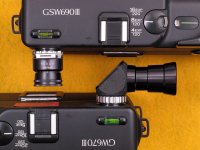piero2025
Established
Hello friends,
I am trying to make up my mind about which Fuji MF camera to buy. From my flickr wanderings, I have seen photos made by the hasselblad/zeiss combination, and although certainly sharp, they are not appealing to me (I would describe it as a "cold" look).
Fujis I like very much, but (again, from flickr, so sometimes a specific camera's photos are on average poorly scanned and so they don't look good on flickr and viceversa)
- gs645, very atttractive format, really not so sharp
- gw670, sharp
- gw690 sharper
- gw 680 sharpest
I don't need the sharpest camera in the world, but from what I have seen, the gs645 really seems like it borders the unsharp. Opinions?
Thanks!
I am trying to make up my mind about which Fuji MF camera to buy. From my flickr wanderings, I have seen photos made by the hasselblad/zeiss combination, and although certainly sharp, they are not appealing to me (I would describe it as a "cold" look).
Fujis I like very much, but (again, from flickr, so sometimes a specific camera's photos are on average poorly scanned and so they don't look good on flickr and viceversa)
- gs645, very atttractive format, really not so sharp
- gw670, sharp
- gw690 sharper
- gw 680 sharpest
I don't need the sharpest camera in the world, but from what I have seen, the gs645 really seems like it borders the unsharp. Opinions?
Thanks!


